
 |
 |
||||||||
|
|
Lessons Menu - Lesson 9 - Lesson 10 - Lesson 11 - Lesson 12 - Lesson 13 - Lesson 14 - Lesson 15 - Lesson 16 |
| Lesson Plan 13 - Agriculture LIFE ON A FAMILY FARM |
download
lesson13.pdf |
|
|
OVERVIEW STUDENT OBJECTIVES CALIFORNIA HISTORY STANDARDS BACKGROUND
ARTICLE 13 STUDENT
ACTIVITY SHEET 13 AND KEY |
ADDITIONAL ITEMS AVAILABLE IN THIS LESSON PLAN: |
|
DOCUMENTS TO DISCUSS
(view online or print screen) |
||||
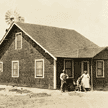 view large image |
1. Buildings on the
G.F. Simpson Ranch [ca. 1924] Buildings on the G.F.Simpson Ranch in Natomas District No. 1000. There are two adults and a teenage boy, presumably the Simpsons. A windmill and truck are shown. |
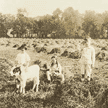 view large image |
2. Prize calf and
children in alfalfa field [ca. 1924] F.W. Kiesel Ranch. The photo shows F.W. Kiesel's son and two daughters along with a prize-winning calf in a field of mown alfalfa. |
|
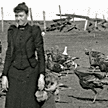 view large image |
3. Our turkeys [ca. 1893] McFarland ranch in Galt, flock of turkeys being tended by 3 women and 3 children. |
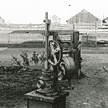 view large image |
4. Pump on McFarland
Ranch [ca. 1893] Galt, CA. View of McFarland ranch barns, corrals and outbuildings. Pump in foreground is labeled "Fulton#1. |
|
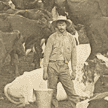 view large image |
5. Wiseman family
ranch [ca. 1900] Dairy farm corral with cows on Wiseman family ranch in Sacramento. Also shows barn, milk cans, and Wiseman family members. |
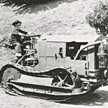 view large image |
6. Boy driving tractor
[1925] Taking peaches to market. |
|
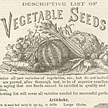 download PDF file |
7. Seed catalog [1891] Catalog contains the description of the W.R. Strong Company's inventory, prices, and ordering information for seeds, trees, and nursery stock. Also contains illustrations of fruits, vegetables, and growing regions. |
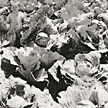 view large image |
8. Home garden headquarters [ca.1925] John Swanson's garden. Jim Olson standing in cabbage patch. Farm house in the background, unidentified child in the foreground. |
|
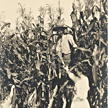 view large image |
9. Picking corn [1910] Picking corn in J.V. Parks garden in Oroville. |
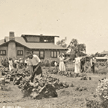 view large image |
10. School garden [ca. 1915-16] View of teenage boys and girls working in a flower and vegetable garden in Highland Park, Sacramento. |
|
|
INSTRUCTIONS 2. Read Background Article 13. You may wish to read it to your students or have them read it by themselves. Discuss any questions that they may have. 3. Show and discuss Document 1, Buildings on the G.F. Simpson Ranch. Ask students to describe what they think it might have been like to live in this farmhouse. Do they think the family had electricity? If not, what things would they have had to do differently in preparing and preserving food? 4. Document 2, Prize calf and children in alfalfa field. Ask students what they think daily life would have been like for children on this ranch? What kinds of activities would the children in the photograph have enjoyed? Has anyone in the class had a livestock animal as a pet or responsibility? 5. Document 3, Our turkeys and Document 4, Pump on McFarland Ranch. The McFarland Ranch was established by John McFarland, the founder of Galt and is being developed as a living history center. The SHO collection database includes several photos of this ranch that were taken in the 1880s. 6. Document 5, Wiseman family ranch and Document 6, Boy driving tractor. Children had many chores on a farm. Discuss what some of these chores might have been. Ask students why they think that the boy was allowed to drive the tractor. 7. Document 7, Seed catalog. Examine the catalog to see what kinds of things could have been planted in an 1891 garden. Are there any fruits or vegetables that the children have never heard of? (e.g. salsify) If so, find out what type of plant it was and how it was used. (for example, a root vegetable that was boiled and mashed) 8. Document 8, Home Garden Headquarters and Document 9, Picking corn. Ask children what is being grown in these gardens. (cabbages and corn) Can they find the child in the cabbage patch? 9. Document 10, School garden. Some schools had their own gardens. Other gardens were sponsored by industrial and 4-H clubs. During World War I, some children grew and canned food for the war effort. To learn more about Victory Gardens in World War II, you can see a film on this site about the Sacramento gardens, which were celebrated in Harvest Festivals. To download and play the film clips, you must have a current QuickTime Player (6.0 or higher). 10. Give students Activity Sheet 13: Life on a Family Farm (printed from PDF file). After they have finished the activity, discuss their answers as a group. (More information on Levi Painter and John Sutter’s Hock Farm is available in Lesson 11). FOLLOW-UP 2. Draw a map for a vegetable garden using plants from the 1891 Strong Catalog. Calculate the cost of the garden. Compare the Strong Catalog to a modern catalog, in terms of text and graphic style, plants offered, and prices. 3. Create a menu for a meal that you would serve in 1900 if you lived on a farm. Which ingredients could you grow, and which would you buy at a store? 4. Interview someone in your community who lived on a farm as a child at least 70 years ago. How was their childhood different from yours? How was it different from that of their own parents or grandparents? Make a book that illustrates your interviewee's life on the farm. 5. Make your own butter, with the help of an adult. |
|
REFERENCES AND RESOURCES Christian, E. and Roth-Singer, L. Let's make butter. Gunderson, M. Pioneer farm cooking: Exploring history through simple recipes. Gunderson, M. Oregon Trail cooking: Exploring history through simple recipes. Kalman, B. Food for the settler. Toronto, New York: Crabtree Publishing Co., 1992. (juvenile) Kalman, B. Hooray for dairy farming! New York: Crabtree Publishing Co., 1998. (juvenile) Kalman, B. and Hale, L. Pioneer recipes. New York: Crabtree Publishing Co., 2000. (juvenile) King, D.C. Pioneer days: Discover the past with
fun projects, games, activities, and recipes. Luchetti, C. Children of the West: Family life on the frontier. New York: W.W. Norton, 2001. (juvenile) Peavy, L.S. and Smith, U. Pioneer children. Norman, OK: University of Oklahoma Press, 1999. Peavy, L.S. and Smith, U. Pioneer women: The lives
of women on the frontier. Saunders-Smith G. Fall harvest. Mankato, MN: Pebble Books, 1998. (juvenile) RELATED LINKS Ardenwood Historic Farm, Fremont, CA Discovery
Museum, Sacramento, CA Heidrick Ag History Center, Woodland, CA
Yolo Land and Cattle Company The Daily Routine of a Kansas Farm Wife in the Last Quarter of the Nineteenth Century Explore the History and Making of Butter, Online Exhibit
History Corner 12- 23-99 Milking and Making Butter in the 1800s |
| Sacramento History Online © 2003 - 2004 | |